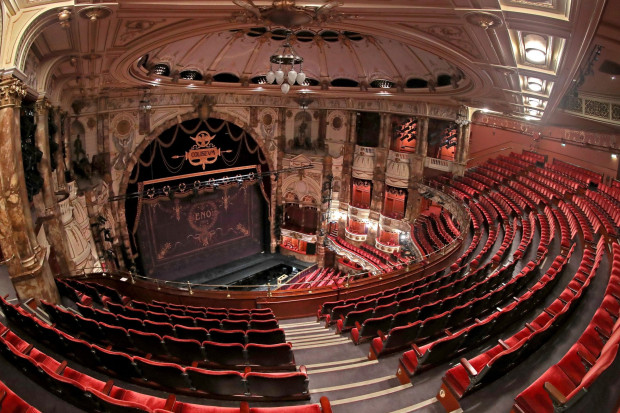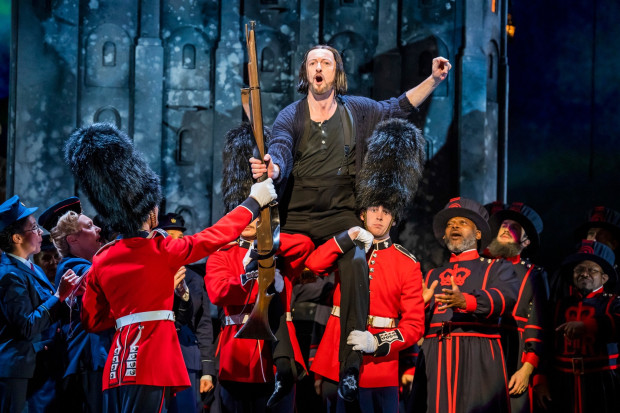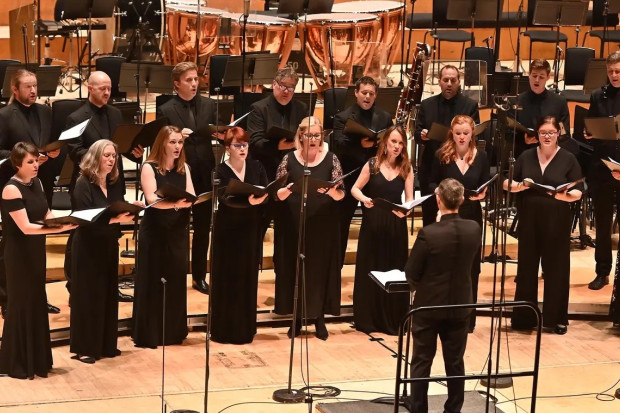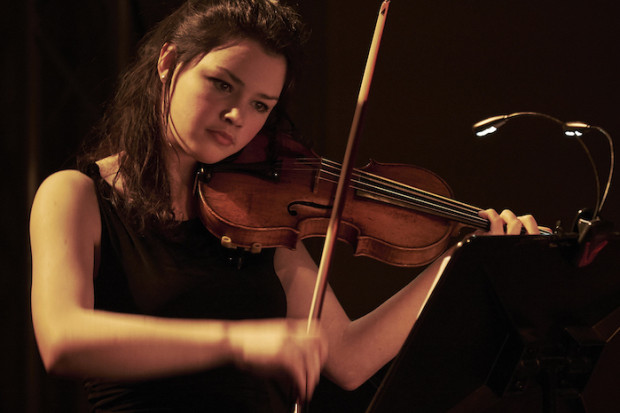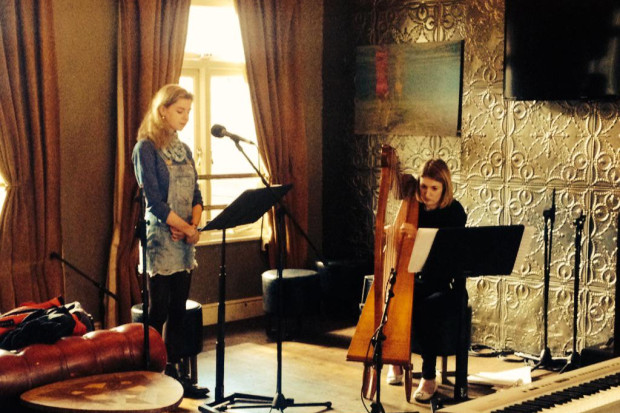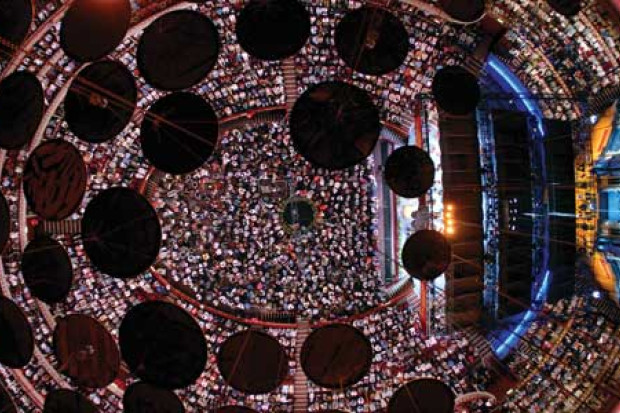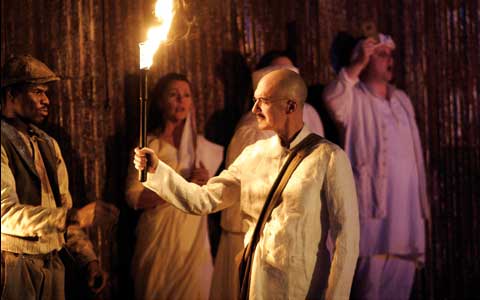
Philip Glass's Satyagraha
That's All There Is
Does all art aspire to the condition of cinema? It seems so. Cinema really is Wagner’s Gesamtkunstwerk, meaning, literally, ‘total-art-work’. It is capable of providing a truly mesmerising, all-consuming experience. And yet there is an apparently paradoxical corollary: cinema, it would appear, aspires to the condition of music. Cinema is constantly seeking to hit the emotional solar plexus with the same kind of inexplicable power, to work with time in the same concentrated way. Cinema strives to be musical (artfully engaged with time) and music strives to be cinematic (all-consuming).
Christopher Fox, in his recent essay on opera reform published in the February-March issue of this magazine, made the point that opera is an essentially dramatic form. Historically, he contends, successful opera has allowed everything we see and hear to arise from dramatic necessity. We’re hard-wired for drama. Or rather, we’re hard-wired for a story. On one level, all our engagements with art are engagements with narrative. And there is a special, almost non-definable, congruency between our experiences of music and narrative: what is singing but a stylised speaking – and enhancing – of a story? Bruce Chatwin writes, in his novel, The Songlines, of how Australian Aboriginals conceive of the world as having been sung into existence. Cinema tells its stories through juxtapositions of text, sound and images, whilst usually foregrounding spoken dialogue. Opera can also tell its stories through juxtapositions of text, sound and images, but it foregrounds musical shapes. It’s uniquely positioned both to address our need for story and, simultaneously, to provide the ineffable impact of music – it is a form charged with a special potential. Last month I finally caught a train to London to see the English National Opera production of Satyagraha – Philip Glass’ 1980 opera based on Mahatma Ghandi’s development of a philosophy of non-violent protest in South Africa in the early years of the twentieth century. And if ever there was to be an example of opera fulfilling its cinematic potential, this is it.
Even ideas are stories. The narrative intention of the opera is to present the story of Ghandi’s philoshophy of satyagraha, which literally means ‘truth-force’ in Sanskrit. It’s an idea that embodies immense focus of body, soul and mind; slowness, steadiness, resolution; and complete singularity of purpose. It was developed as a philosophy of action. Ghandi referred to the non-violent protests he led as acts of satyagraha – those non-violent marches and demonstrations eventually changed history. Glass and his co-librettist, Constance De Jong, intend to immerse the audience in the idea of satyagraha, its ramifications and implications. They work in very slow arcs: nothing is accomplished quickly. The impact depends on duration. And, of course, opera as a form provides for that very well.
The principle action is the twenty or thirty minute set-piece in which everything experienced gradually accumulates over time to assemble one monumental image. A series of such set-pieces themselves then accumulate over the total three-hour duration to assemble an even larger monumental image. The overall process is both beautifully analogous to the persistence of non-violent protest (or what Glass has described as ‘the stamina of [Ghandi’s] morality’) and reminiscent of so much great cinema.
Glass sets up a clear mode of operation from the start of any set-piece, and it unfolds gradually as if its own narrative. In the beginning, perhaps, Glass has a short, cyclical, modal melody accompanied by a repeating set of arpeggiated chords. He repeats it. A lot. Then he changes the instrumentation. Then he extends the melody very slightly – perhaps only by one note – or he doubles the melody at the octave. Here every change is felt in the sharpest relief, and each time you’re on the edge of your seat. Perhaps the most singular example of this persistence in the music is the final aria of the entire work, sung by the character of Ghandi, a tenor. The musical material consists of nothing more than three chords played by the orchestra, each ascending by step to the next. Above this simple progression an eight-note ascending scale is sung by the tenor. That’s all there is. The chord progression is decorated by arpeggiation; sometimes it’s reorchestrated; sometimes the tenor holds his final note just a little bit longer than usual. It is because the basic material is so unwavering that all these variations are charged with emotion. It’s sublimely beautiful and transcendent.
Visual analogues to Glass’s cumulative musical forms are provided through puppetry, object manipulation and animation. One scene in the second act sees cast members – very, very slowly – pull rolls of Sellotape across the stage such that, after twenty minutes or so, there is a strangely opaque screen across the stage. The tape screen is then transformed, again, very slowly, into an enormous Sellotape puppet manipulated by a puppeteer suspended from the gantry. The care, diligence and team-work required to execute these breathtaking visual pieces is wonderfully congruent with the musical and textual intention of the work.
Satyagraha succeeds in providing a meaningful experience of music-led cinema because the dramatic, musical and visual intentions are profoundly unified – the music effectively drives the narrative, and the text and the images serve both. The big implication is this: why can’t we use this model in presenting concerts of non-operatic music?
Published on 1 April 2010
Garrett Sholdice is a composer and a director of the record label and music production company Ergodos.












